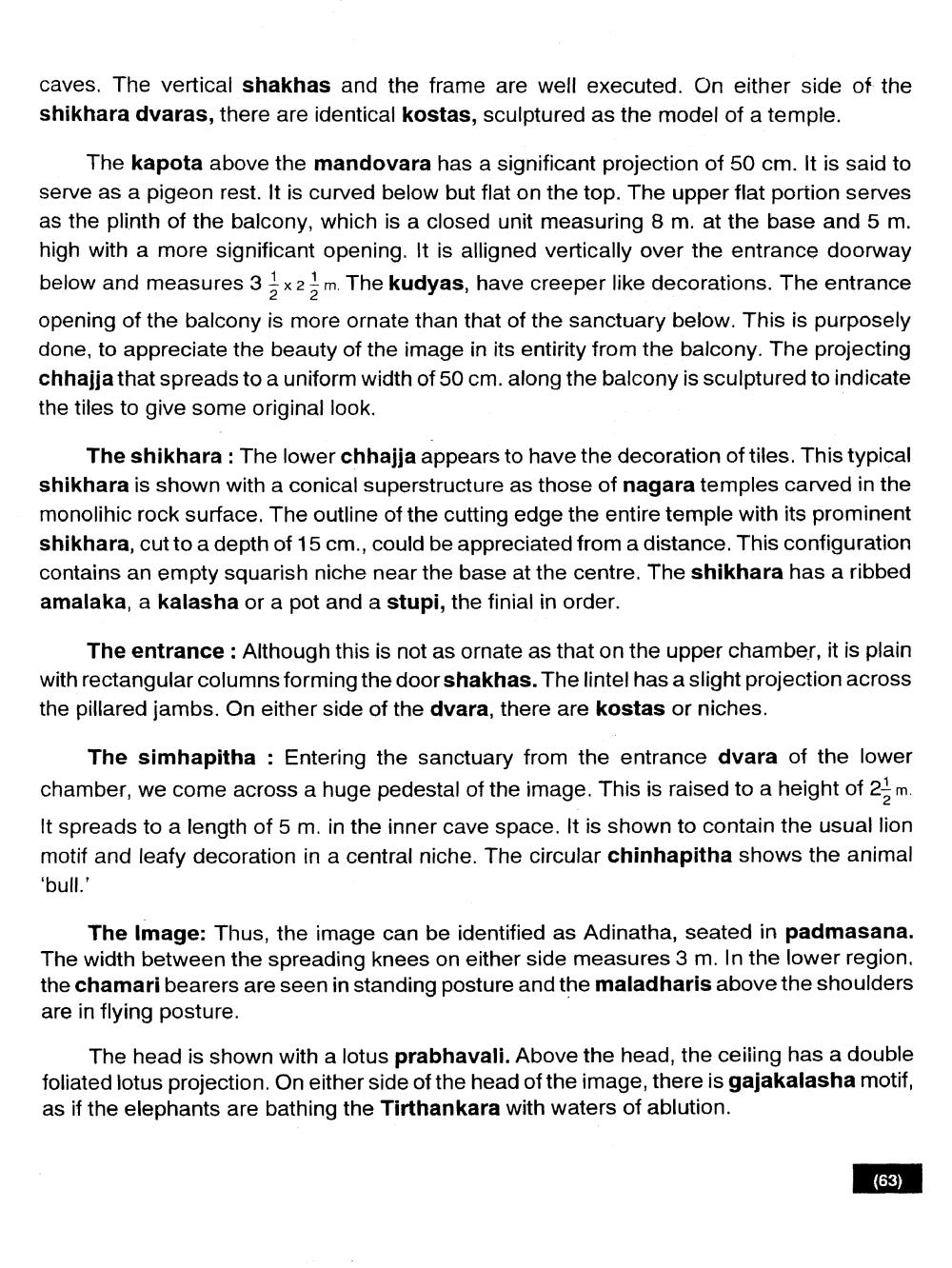________________
caves. The vertical shakhas and the frame are well executed. On either side of the shikhara dvaras, there are identical kostas, sculptured as the model of a temple.
The kapota above the mandovara has a significant projection of 50 cm. It is said to serve as a pigeon rest. It is curved below but flat on the top. The upper flat portion serves as the plinth of the balcony, which is a closed unit measuring 8 m. at the base and 5 m. high with a more significant opening. It is alligned vertically over the entrance doorway below and measu
The kudyas, have creeper like decorations. The entrance opening of the balcony is more ornate than that of the sanctuary below. This is purposely done, to appreciate the beauty of the image in its entirity from the balcony. The projecting chhajja that spreads to a uniform width of 50 cm. along the balcony is sculptured to indicate the tiles to give some original look.
The shikhara : The lower chhajja appears to have the decoration of tiles. This typical shikhara is shown with a conical superstructure as those of nagara temples carved in the monolihic rock surface. The outline of the cutting edge the entire temple with its prominent shikhara, cut to a depth of 15 cm., could be appreciated from a distance. This configuration contains an empty squarish niche near the base at the centre. The shikhara has a ribbed amalaka, a kalasha or a pot and a stupi, the finial in order.
The entrance : Although this is not as ornate as that on the upper chamber, it is plain with rectangular columns forming the door shakhas. The lintel has a slight projection across the pillared jambs. On either side of the dvara, there are kostas or niches.
The simhapitha : Entering the sanctuary from the entrance dvara of the lower chamber, we come across a huge pedestal of the image. This is raised to a height It spreads to a length of 5 m. in the inner cave space. It is shown to contain the usual lion motif and leafy decoration in a central niche. The circular chinhapitha shows the animal 'bull.'
The Image: Thus, the image can be identified as Adinatha, seated in padmasana. The width between the spreading knees on either side measures 3 m. In the lower region, the chamari bearers are seen in standing posture and the maladharis above the shoulders are in flying posture.
The head is shown with a lotus prabhavali. Above the head, the ceiling has a double foliated lotus projection. On either side of the head of the image, there is gajakalasha motif, as if the elephants are bathing the Tirthankara with waters of ablution.
(63)




